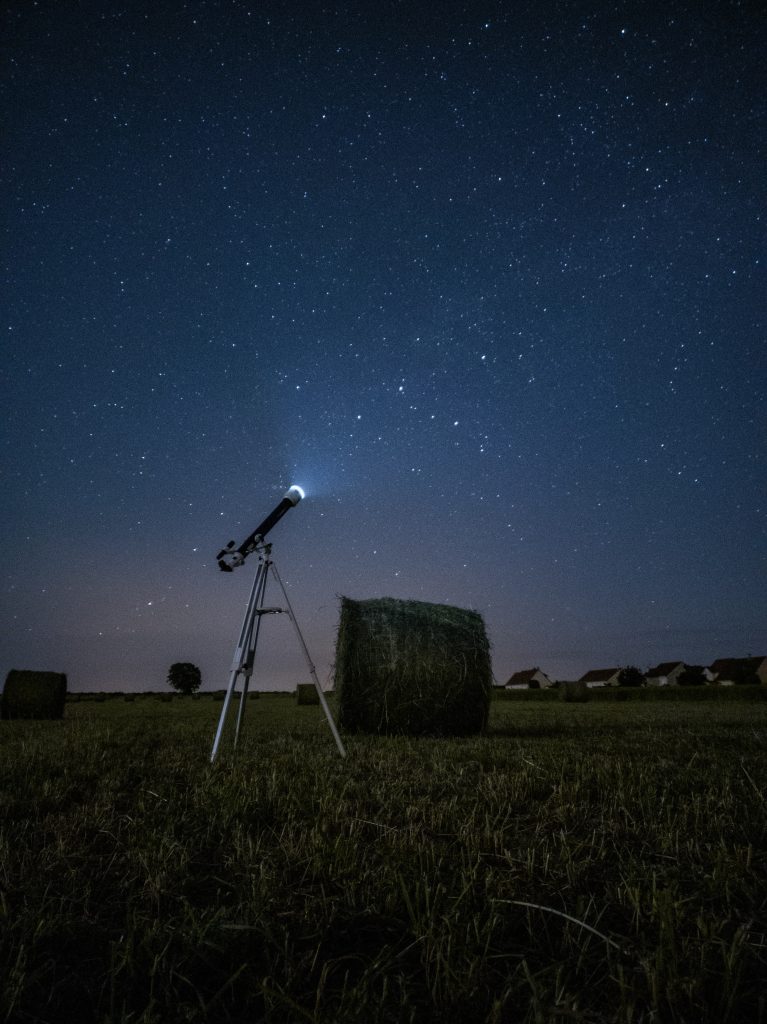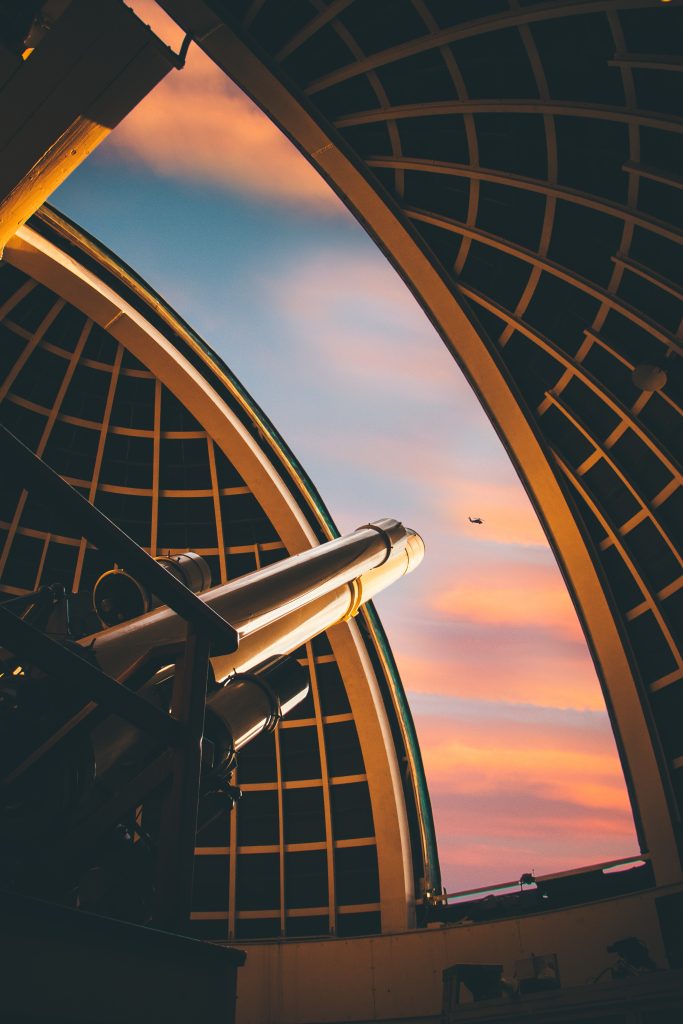Have you ever wondered about the difference between a short-tube and long-tube telescope? Well, let me shed some light on this topic for you! When it comes to telescopes, the main difference lies in their length. A short-tube telescope has a shorter length, while a long-tube telescope, as the name suggests, has a longer length.
Now, you might be thinking, does the length of the telescope really matter? The answer is yes, it does! The length of the telescope affects the focal length, which ultimately determines the magnification and field of view. A short-tube telescope typically has a wider field of view and lower magnification, making it great for observing large areas of the sky. On the other hand, a long-tube telescope offers higher magnification, perfect for observing distant celestial objects in more detail. So, depending on what you wish to observe, choosing between a short-tube and long-tube telescope can make a significant difference in your stargazing experience.

Overview
Definition of short-tube telescope
A short-tube telescope refers to a type of telescope that has a relatively shorter overall length compared to its aperture, or the diameter of its primary lens or mirror. These telescopes are designed for wide-field observations and are often favored by astrophotographers due to their compact and portable nature. Short-tube telescopes typically have a focal length that is equal to or slightly longer than their aperture.
Definition of long-tube telescope
On the other hand, a long-tube telescope is characterized by its relatively longer overall length compared to its aperture. These telescopes are known for their ability to provide higher magnification and are favored by astronomers who are interested in observing celestial objects in detail. Long-tube telescopes typically have a focal length that is significantly longer than their aperture.
Design
Optical design of short-tube telescope
Short-tube telescopes often utilize a unique optical design known as a wide-field optical system. This design allows for a wider field of view, enabling observers to capture a larger portion of the night sky. The wide-field optical system helps reduce certain types of optical aberrations, resulting in clear and sharp images across the field of view.
Optical design of long-tube telescope
Long-tube telescopes, on the other hand, feature a design known as a narrow-field optical system. This design focuses on providing higher magnification and resolving power, which is achieved through an increased focal length. The narrow-field optical system allows astronomers to observe celestial objects with greater detail and clarity.
Focal length and aperture
The focal length of a telescope refers to the distance from the primary lens or mirror to the point where the light converges to form an image. In short-tube telescopes, the focal length is typically equal to or slightly longer than the aperture. This design choice allows for a balance between wide-field observations and moderate magnification.
In contrast, long-tube telescopes have significantly longer focal lengths compared to their aperture. The increased focal length allows for higher magnification and the ability to observe distant objects in greater detail.
Tube length and portability
The overall length of a telescope’s tube plays a crucial role in its portability. Short-tube telescopes are designed to be compact and portable, making them easy to transport and set up at various observing locations. Their shorter tube length also reduces the risk of the telescope becoming unbalanced or unstable when mounted.
Long-tube telescopes, due to their longer tube length, can be less portable compared to their shorter counterparts. The increased length can make them bulkier and less convenient to transport, often requiring specialized carrying cases or dedicated setups. However, their longer tube length can contribute to increased stability and precision during observations.
Image quality
Chromatic aberration
Chromatic aberration is an optical phenomenon that causes different wavelengths of light to focus at different points. This can result in color fringing or blurring around the edges of objects in the image. Short-tube telescopes are typically designed to minimize chromatic aberration, allowing for clear and sharp images across the field of view.
Long-tube telescopes, while generally offering higher magnification, may be more susceptible to chromatic aberration, especially in lower-end models. However, premium long-tube telescopes often utilize advanced optical technologies, such as specialized lens coatings or apochromatic lens designs, to reduce or eliminate chromatic aberration for improved image quality.
Field curvature
Field curvature refers to the distortion of images across the field of view of a telescope. In short-tube telescopes, the wide-field optical design helps minimize field curvature, leading to flat and distortion-free images even at the edges of the field of view. This makes them ideal for wide-field astrophotography, where capturing a large portion of the night sky without distortion is essential.
Long-tube telescopes, due to their narrow-field optical system, may be more prone to field curvature. However, premium models often incorporate corrective elements or design features to minimize this effect and provide a flatter field of view.
Coma
Coma is another optical aberration that can cause the stars and other point sources to appear comet-like or distorted at the edges of the field of view. Short-tube telescopes are designed to minimize or eliminate coma, resulting in sharp and pinpoint stars across the entire field. This is particularly important for astrophotographers aiming to capture detailed images of stars or other point sources.
Long-tube telescopes may exhibit some degree of coma, especially in models with larger apertures and wider fields of view. However, specialized eyepieces or coma correctors can be used to reduce or eliminate coma and achieve sharper images.
Astigmatism
Astigmatism is an optical aberration that causes point sources of light to appear elongated or distorted. Short-tube telescopes are typically designed to minimize astigmatism, ensuring that stars and other objects appear as pinpoint sources of light. This is important for astrophotography and visual observations alike, as it allows for accurate depiction and analysis of celestial objects.
Long-tube telescopes can also exhibit astigmatism, especially in lower-quality models or when not properly collimated. Collimation refers to the alignment of the optical elements within the telescope, and it plays a crucial role in minimizing astigmatism. Regular maintenance and collimation can help ensure optimal performance and image quality.
Field of view
Wide field of view in short-tube telescopes
Short-tube telescopes are specifically designed to provide a wide field of view, allowing observers to capture a larger portion of the night sky in a single image or observation. This is especially beneficial for astrophotography, as it enables the inclusion of expansive celestial objects or nebulae, enhancing the visual impact of the final image.
Narrow field of view in long-tube telescopes
In contrast, long-tube telescopes generally offer a narrower field of view due to their higher magnification capabilities. A narrow field of view can be advantageous for observing smaller and more distant objects with greater detail and clarity. This is particularly useful when focusing on specific celestial objects such as planets, star clusters, or galaxies, where magnification is desired to reveal intricate features.
Implications for observing different celestial objects
The wide field of view in short-tube telescopes makes them ideal for capturing impressive images of large and extended objects, such as galaxies, nebulae, or the Milky Way. Observers can appreciate the vastness of these objects and see them in relation to their surroundings.
On the other hand, the narrow field of view in long-tube telescopes allows for detailed observations of smaller objects, such as planets or star clusters. The increased magnification reveals intricate features and allows astronomers to study these objects in greater depth.

Ease of use
Compactness and portability of short-tube telescopes
Short-tube telescopes are known for their compact and portable nature, making them highly user-friendly. Their smaller size and lighter weight make them easy to transport, especially for those who enjoy stargazing in different locations. Short-tube telescopes are also relatively straightforward to set up, requiring less time and effort to get ready for observing sessions.
Stability and precision of long-tube telescopes
Long-tube telescopes often excel in terms of stability and precision. Their longer tube length provides additional rigidity, reducing vibrations and offering improved stability during observations. This makes long-tube telescopes particularly suitable for high-magnification observations, where stability is crucial for clear and steady images.
Mounting options
Both short-tube and long-tube telescopes offer various mounting options to accommodate different user preferences. Common mounting options include altazimuth mounts, which allow for easy maneuverability and tracking of celestial objects, and equatorial mounts, which enable more precise tracking aligned with the Earth’s rotation. Mounts can significantly enhance the ease of use and comfort when operating a telescope, and the choice of mounting largely depends on personal preferences and observing goals.
Ease of transport and setup
Short-tube telescopes, with their compact and lightweight design, are generally easier to transport and set up compared to their long-tube counterparts. They require less space for storage and can be quickly assembled, making them more suitable for spontaneous observing sessions or on-the-go adventures.
Long-tube telescopes, while offering enhanced stability and precision, may require more effort to transport and set up due to their larger size and longer tube length. Specialized carrying cases or dedicated setups may be necessary, but the reward of observing celestial objects in high magnification can outweigh the additional setup time and transportation considerations.
Suitable applications
Short-tube telescopes for wide-field astrophotography
Short-tube telescopes excel in wide-field astrophotography, enabling photographers to capture breathtaking images of large celestial objects or the night sky. Their wide field of view allows for stunning compositions and the inclusion of contextual elements, creating visually engaging images. The compactness and portability of short-tube telescopes also make them a popular choice for astrophotographers who enjoy traveling to different locations in search of dark skies.
Long-tube telescopes for high magnification observations
Long-tube telescopes are favored by astronomers and enthusiasts seeking high magnification and detailed observations of celestial objects. Their longer focal lengths, combined with larger apertures, allow for excellent views of planets, star clusters, and other small or distant objects. These telescopes often reveal fine details and subtle features that may be missed with shorter focal length instruments.
Specialized applications for each type
While short-tube telescopes are commonly associated with wide-field astrophotography, they are also suitable for visual observations of larger objects, such as star fields or the Milky Way. Their wide field of view offers an immersive experience and allows observers to appreciate the vastness of the universe.
On the other hand, long-tube telescopes are not limited to high magnification observations alone. They can also be used for astrophotography, especially when focusing on smaller or intricate objects such as the Moon or planets. Longer focal lengths provide opportunities for capturing fine details and enhancing the resolution of celestial objects in photographs.

Budget considerations
Affordability of short-tube telescopes
Short-tube telescopes are often more affordable compared to their long-tube counterparts. Their simpler optical designs and smaller sizes contribute to lower manufacturing costs. This makes short-tube telescopes a great entry point for beginners or those on a tighter budget.
Cost implications of long-tube telescopes
Long-tube telescopes, particularly those with larger apertures and specialized optical components, tend to be more expensive. The longer focal lengths and superior image quality often come with a higher price tag. However, these telescopes provide exceptional performance and are often favored by experienced astronomers who prioritize detailed observations.
Value for money and specific requirements
When considering budget, it is essential to evaluate the value for money that a telescope offers. Short-tube telescopes provide an excellent balance between affordability and performance, making them suitable for many amateur astronomers. Long-tube telescopes, despite being more expensive, offer higher magnification and superior image quality, which may be essential for specific observing goals. Assessing individual requirements and priorities can help determine whether the additional cost of a long-tube telescope is justified.
Comparing popular models
Comparison of short-tube telescope models
When comparing short-tube telescope models, factors such as aperture, focal length, and image quality should be considered. Popular short-tube telescope models include the Celestron AstroMaster 70EQ and the Orion 9005 AstroView.
The Celestron AstroMaster 70EQ features a 70mm aperture and a 900mm focal length, providing a good balance between wide-field observations and moderate magnification. The Orion 9005 AstroView offers a slightly larger aperture of 90mm and a longer focal length of 910mm, allowing for higher resolution and enhanced image quality.
Comparison of long-tube telescope models
Comparing long-tube telescope models involves evaluating factors such as aperture, focal length, and optical characteristics. Top long-tube telescope models include the Meade LX200-ACF and the Sky-Watcher ProED.
The Meade LX200-ACF is available in various aperture sizes, ranging from 8 inches to 16 inches, providing exceptional light-gathering capabilities and high resolution. It features an advanced coma-free optical system, ensuring sharp and detailed views. The Sky-Watcher ProED series offers apochromatic refractors with high-quality ED (Extra-Low Dispersion) glass, minimizing chromatic aberration and providing superior image quality.
Key features and specifications
Key features and specifications to consider when comparing telescope models include aperture size, focal length, quality of optical coatings, mounting options, and included accessories. Higher-quality optical coatings, such as fully multi-coated or apochromatic lenses, can significantly improve image quality by reducing aberrations and increasing light transmission. Additionally, the choice of mount can greatly affect the overall user experience and ease of use.
Choosing the right telescope
Determining your observing goals and preferences
Choosing the right telescope ultimately comes down to aligning your observing goals and preferences. Consider whether you are primarily interested in wide-field astrophotography, high-magnification observations, or a combination of both. Understanding your specific interests and desired outcomes will help guide you towards the most suitable telescope type.
Considering factors such as budget, portability, and image quality
When making a selection, it is essential to consider factors such as budget, portability, and image quality. Determine the maximum amount you are willing to invest in a telescope, as well as how frequently you plan to transport and set up your equipment. Additionally, assess the importance of image quality and resolution in your observing goals, as this will influence the type of telescope and its optical characteristics that will best meet your needs.
Consulting experts and user reviews
Consulting with experts, experienced astronomers, or local astronomy clubs can provide valuable insights and recommendations. They can offer personalized advice based on their experiences and knowledge, helping you make an informed decision. Additionally, reading user reviews and testimonials can provide further guidance and real-world perspectives on different telescope models.
Additional Resources
Books and guides on telescope selection
Numerous books and guides are available to further explore the topic of telescope selection. Some popular options include “Turn Left at Orion” by Guy Consolmagno and Dan M. Davis, which provides practical information and tips for backyard astronomy, and “Choosing and Using Astronomical Eyepieces” by William Paolini, which focuses on selecting the right eyepieces for different telescopes.
Online forums and communities for further discussion
Engaging in online forums and communities dedicated to telescopes and astronomy can offer a wealth of information and foster discussions with like-minded individuals. Platforms such as Cloudy Nights Telescope Reviews and Astronomy Forum provide opportunities to ask questions, seek advice, and share experiences. These communities can be a valuable resource for staying informed about the latest developments and finding answers to specific queries.











